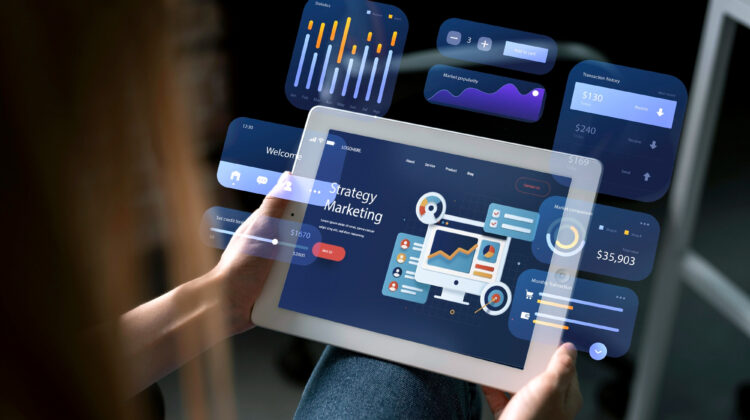
Unified Digital Workflows: Integrating Smart Devices, Apps, and Automations
Introduction: The Push for Seamless Workflows
Remote and hybrid work have shifted productivity needs. No longer confined to traditional offices, professionals rely on interconnected tools to manage tasks, meetings, and communications. Yet many face the challenge of juggling multiple apps, devices, and platforms. Unified digital workflows—the integration of smart devices, apps, and automations—are becoming core Work Essentials for reducing friction, saving time, and improving collaboration.
What Are Unified Digital Workflows?
A unified digital workflow is a system where all work tools communicate and automate seamlessly. Instead of toggling between devices and apps, tasks flow naturally from one platform to another. For example, an email request can automatically generate a project management task, update a calendar, and notify a team channel—all without manual input.
These workflows rely on three pillars:
- Smart Devices: Tools like voice assistants, wearables, and IoT-enabled hardware.
- Apps: Productivity software for communication, project management, and document sharing.
- Automations: AI and workflow engines that connect devices and apps to remove repetitive steps.
The Role of Smart Devices in Workflows
Smart devices are no longer standalone gadgets—they act as productivity hubs.
- Smart Speakers and Displays: Amazon Echo or Google Nest Hub can schedule meetings, launch video calls, and control office lighting with simple voice commands.
- Wearables: Smartwatches track health data, alerting you to take breaks and automatically silencing notifications during focus sessions.
- Connected Office Devices: Printers, webcams, and conferencing systems now integrate directly with cloud platforms, reducing setup time.
For Work Essentials, these devices serve as gateways that make workflows more natural and responsive.
Apps as the Backbone of Digital Productivity
Apps are the interface where most professional tasks happen. The key lies in choosing platforms that integrate smoothly.
- Communication Apps: Slack, Microsoft Teams, and Google Chat centralize collaboration and integrate with calendars and file storage.
- Project Management Tools: Trello, Asana, and ClickUp turn requests into trackable tasks and automate workflows with built-in bots.
- Cloud Storage: Google Drive, OneDrive, and Dropbox automatically sync files across devices, ensuring version control.
- Note-Taking & Documentation: Notion and Evernote integrate with calendars, creating context-aware notes for meetings.
When these apps are unified, professionals eliminate silos and streamline daily operations.
Automations: The Secret Weapon of Efficiency
Automation tools are the glue that ties everything together. Platforms like Zapier, IFTTT, and Make (formerly Integromat) connect apps and devices with conditional rules.
Examples include:
- Automatically saving email attachments into cloud storage.
- Creating calendar events when tasks are assigned in project apps.
- Sending Slack reminders when deadlines approach.
- Adjusting smart lighting when focus mode begins.
By reducing manual steps, automations allow professionals to focus on creative and strategic work instead of routine tasks.
Real-World Example: A Unified Workflow in Action
Imagine a remote marketing manager’s day:
- At 9 a.m., their smartwatch detects they’ve started moving and automatically sets work lights to daylight mode.
- Alexa greets them with the day’s agenda pulled from Google Calendar.
- During a call scheduled on Zoom, AI transcription creates meeting notes in Notion.
- Tasks discussed in the call automatically appear in Asana via a Zapier integration.
- At 5 p.m., smart plugs power down monitors, lights shift to warm tones, and a Slack status updates to “Offline.”
This scenario illustrates how Work Essentials—devices, apps, and automations—blend into a cohesive digital rhythm.
Benefits of Unified Digital Workflows
Adopting integrated workflows creates measurable improvements:
- Time Savings: Automating repetitive steps saves hours weekly.
- Consistency: Tasks are captured and updated reliably across systems.
- Focus: Reduces context-switching between apps.
- Collaboration: Shared platforms ensure everyone stays aligned.
- Well-Being: Smart devices adjust environments to support energy and focus levels.
For affiliate audiences, the appeal lies in productivity gains without requiring expensive enterprise systems.
Challenges and Considerations
Despite advantages, building unified workflows comes with challenges:
- Complex Setup: Connecting multiple apps and devices requires planning.
- Compatibility Issues: Not all platforms integrate seamlessly.
- Cost: Subscriptions to multiple apps and automation platforms can add up.
- Privacy: Sharing data across platforms increases the need for strong security.
Consumers should prioritize interoperability, strong support, and transparent privacy policies when investing in Work Essentials.
Expert Insights: The Future of Unified Workflows
Industry analysts predict that unified workflows will become increasingly AI-driven. Future systems will not only automate tasks but anticipate them, suggesting proactive adjustments. For example, AI could detect stress patterns from wearables and recommend rescheduling meetings, or automatically prioritize urgent tasks across multiple platforms.
Emerging standards will also reduce fragmentation, making it easier for smart devices and apps to interconnect without third-party tools. For professionals, this means workflows will become even smoother and less visible—working in the background like digital assistants.
Practical Tips for Building Your Workflow
For remote professionals and small teams, building unified workflows doesn’t have to be overwhelming:
- Start with Core Apps: Choose one communication platform, one project tool, and one cloud storage service.
- Integrate Step-by-Step: Begin with simple automations such as syncing calendar events with task lists.
- Leverage Voice Assistants: Use smart speakers to manage schedules and reminders.
- Monitor and Optimize: Review workflows monthly to eliminate bottlenecks.
- Expand Gradually: Add advanced automations and smart devices as needs grow.
Affiliate product recommendations can highlight starter kits (like smart displays or automation app subscriptions) alongside premium setups for advanced users.
Conclusion: Work Essentials for the Digital Age
In today’s fast-paced environment, productivity isn’t just about working harder—it’s about working smarter. Unified digital workflows deliver that advantage by aligning smart devices, apps, and automations into seamless systems.
For professionals, students, and teams, investing in these Work Essentials creates more than convenience—it builds resilience, efficiency, and focus. As the future of work becomes increasingly digital, unified workflows will transform from optional upgrades into indispensable foundations of daily productivity.







